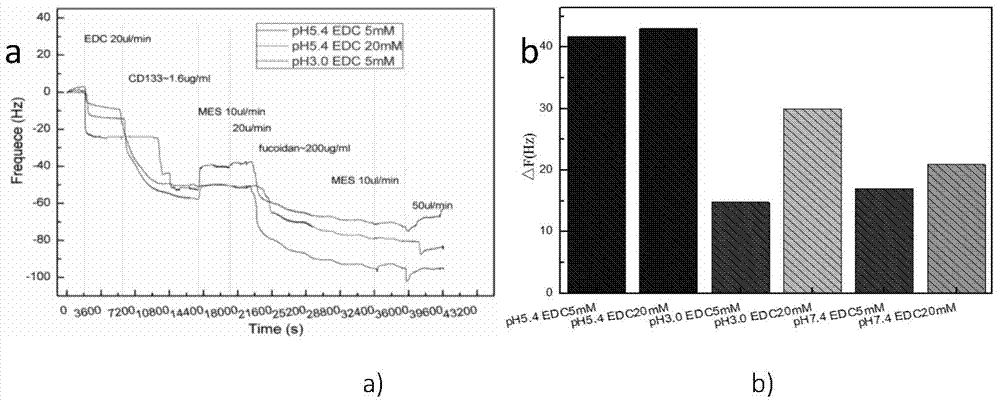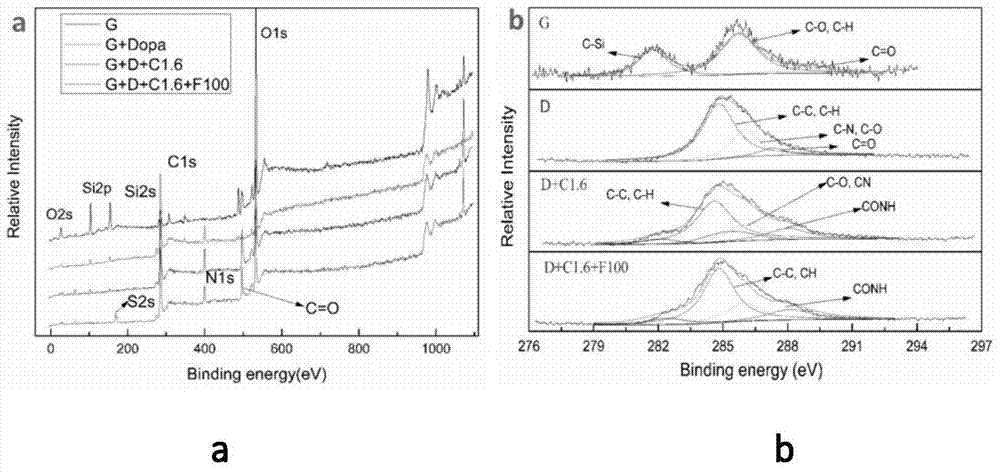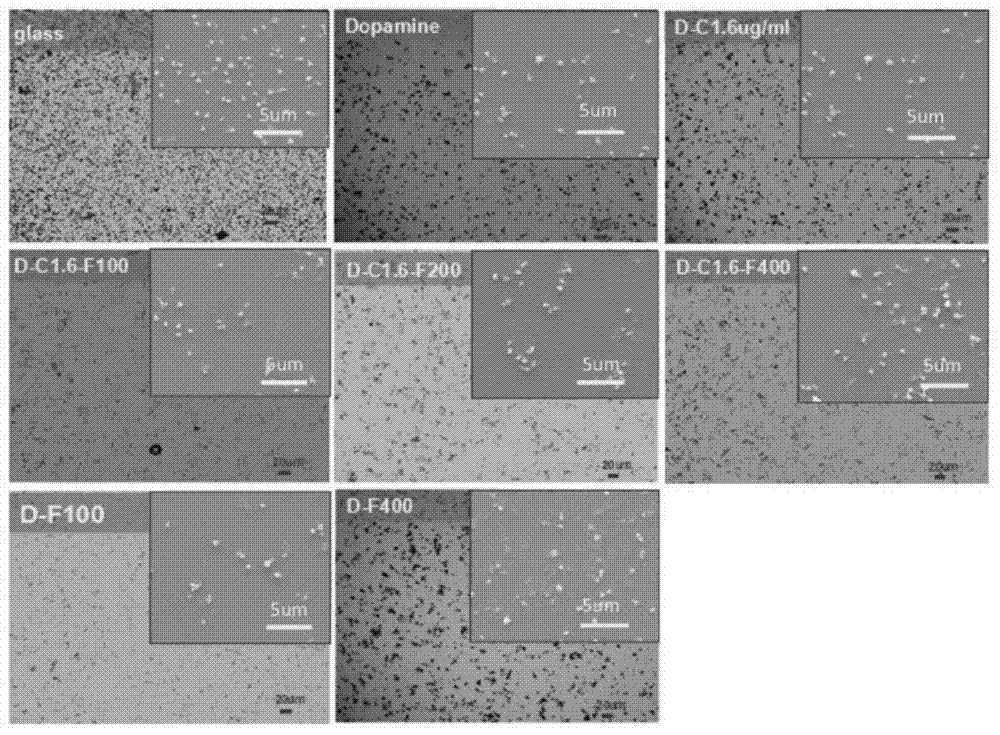Preparation method of novel anticoagulant stents coating capable of capturing endothelial progenitor cells
A technology of endothelial progenitor cells and anticoagulation, applied in the field of biomedical engineering materials, can solve the problems of poor anticoagulant performance and blood compatibility, achieve excellent anticoagulant ability, promote rapid endothelialization, and reduce the risk of late thrombus Effect
- Summary
- Abstract
- Description
- Claims
- Application Information
AI Technical Summary
Problems solved by technology
Method used
Image
Examples
Embodiment approach 2
[0033] 1. Prepare a sample grafted with CD133 using a gold sheet;
[0034] 2. Then wash the QCM-D channel with SDS and UP water in sequence;
[0035] 3. Place the sample, then open the software, set the temperature to 37°C, and test the sensitivity of the instrument;
[0036] 4. Start to run the air to check whether the QCM-D gold sheet is intact; then pass into the PBS buffer
[0037] 5. After the baseline runs flat, inject αMEM (containing 10% bovine serum albumin) medium solution for about 30 minutes to obtain a relatively flat baseline;
[0038] 6. Pass through the EPCs cell solution containing bovine serum albumin (the cell density is about 10^4 / ml); finally wait for about 8 hours, and then observe the changes in frequency and dissipation. After the experiment is over, analyze the data.
Embodiment 1
[0040] 1. The titanium oxide stent was ultrasonically cleaned three times with SDS, alcohol (ethanol), and RO water (deionized water) for 10 minutes each time, and then dried;
[0041] 2. Hydroxylation treatment of slides: Put the slides in concentrated sulfuric acid and hydrogen peroxide according to the volume ratio of 7:3 (V%:V%=7:3) and soak in 100°C for 2 hours; then wash with RO water for 3 hours times, 5 minutes each time;
[0042] 3. Then immediately put the above sample into Tris-base (10mM, pH8.5) buffer solution, put it in a shaker and shake it tightly for about 1 hour, and then shake it open for about 11 hours. Then use RO water to ultrasonically clean 3 times, and dry with cold air.
[0043] 4. Then configure 10ml of EDC / NHS / MES (1omM / 20mM / 50mM) PBS solution with pH 5.4, then dilute the concentration of CD133 solution with EDC to 0.8-3.2ug / ml and the concentration of Fucoidan to 50-400ug / ml; 50ul of CD133 solution and Fucoidan were dropped onto the surface of th...
Embodiment 2
[0045] 1. The titanium oxide stent was ultrasonically cleaned three times with SDS, alcohol (ethanol), and RO water (deionized water) for 10 minutes each time, and then dried;
[0046] 2. Hydroxylation treatment of slides: Put the slides in concentrated sulfuric acid and hydrogen peroxide according to the volume ratio of 7:3 (V%:V%=7:3) and soak in 100°C for 2 hours; then wash with RO water for 3 hours times, 5 minutes each time;
[0047] 3. Immediately put the above sample into Tris-base (10mM, pH8.5) buffer solution, soak for 8h, then ultrasonically clean it with RO water for 3 times, each time for 5min, and then continue to soak for 3 times in a row. The glass slides of the dopamine film are sealed and preserved;
[0048] 4. Then configure 10ml of EDC / NHS / MES (5mM / 10mM / 50mM) PBS solution with pH 7.4, then dilute the concentration of CD133 solution with EDC to 0.8-3.2ug / ml and the concentration of Fucoidan to 50-400ug / ml; 50ul of CD133 solution and Fucoidan were dropped on...
PUM
 Login to View More
Login to View More Abstract
Description
Claims
Application Information
 Login to View More
Login to View More - R&D
- Intellectual Property
- Life Sciences
- Materials
- Tech Scout
- Unparalleled Data Quality
- Higher Quality Content
- 60% Fewer Hallucinations
Browse by: Latest US Patents, China's latest patents, Technical Efficacy Thesaurus, Application Domain, Technology Topic, Popular Technical Reports.
© 2025 PatSnap. All rights reserved.Legal|Privacy policy|Modern Slavery Act Transparency Statement|Sitemap|About US| Contact US: help@patsnap.com



